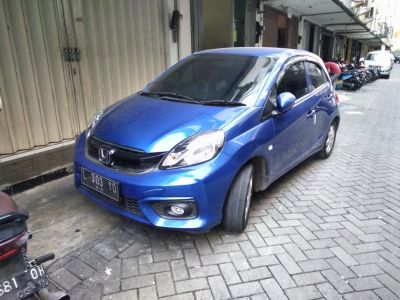 2000 Seat Arosa (6H, facelift 2000) Dimensions, Size & Specs
2000 Seat Arosa (6H, facelift 2000) Dimensions, Size & SpecsMeasurements of the 2000 Seat Arosa, engineered for optimal performance and comfort
| Dimensions | |
|---|---|
| Length: | 3529-3551 mm138.9-139.8 in11.6-11.7 ft |
| Width: | 1621-1639 mm63.8-64.5 in5.3-5.4 ft |
| Height: | 1460 mm57.5 in4.8 ft |
| Trunk Capacity: | 130 liter4.6 cu ft |
| Trunk Capacity (Max): | 790 liter27.9 cu ft |
| Weight Specifications | |
| Curb Weight: | 860-965 kg1896-2127 lbs |
| Maximal permitted Weight: | 1200-1445 kg2646-3186 lbs |
| Tire Specifications | |
| Rims Sizes: | 14-inch rims:
|
| Tire Sizes: |
|
The Seat Arosa (6H facelift 2000) is a compact hatchback produced from 2000 to 2005, designed for urban mobility and efficiency. This generation of the Arosa features slight dimensional variations, ranging from 3529 mm to 3551 mm (138.9 to 139.8 inches) in length, making it maneuverable for city driving. The width spans between 1621 mm and 1639 mm (63.8 to 64.5 inches), and its height ranges from 1455 mm to 1460 mm (57.3 to 57.5 inches), offering a balanced stance and comfortable headroom for passengers.
The vehicle's curb weight varies between 860 kg and 965 kg (1896 to 2128 lbs), depending on trim and equipment, supporting agility and fuel efficiency. Its maximum permissible weight spans from 1200 kg to 1445 kg (2645 to 3185 lbs), allowing it to carry occupants and cargo with reasonable capacity. The Seat Arosa’s luggage capacity is 130 liters (4.59 cubic feet) with all seats in place, expanding considerably to 790 liters (27.9 cubic feet) when rear seats are folded down, offering practical flexibility for everyday use.
Wheel sizes on this model include 14-inch rims (6J x 14), paired with tire options such as 155/65R14, 185/55R14, and even 185/55R16 for improved road grip and comfort. The Seat Arosa 6H facelift balances compact external dimensions with smart interior utility, making it a popular choice for drivers seeking a small yet practical hatchback around the early 2000s.
Discover the standout features that make the 2000 Seat Arosa a leader in its class
Have a question? Please check our knowledgebase first.
The Seat Arosa (6H facelift 2000) has a length ranging from 3529 mm to 3551 mm (approximately 139 to 140 inches), a width between 1621 mm and 1639 mm (about 63.8 to 64.5 inches), and a height between 1455 mm and 1460 mm (around 57.3 to 57.5 inches). These compact dimensions position the Arosa as a small city hatchback that's easy to maneuver and park in tight urban spaces while still allowing reasonable interior space for its class.
The curb weight of the Seat Arosa (6H facelift 2000) ranges from 860 kg to 965 kg (approximately 1896 to 2126 lbs), making it a lightweight vehicle that contributes to nimble handling and fuel efficiency. The maximum permissible weight varies between 1200 kg and 1445 kg (about 2645 to 3185 lbs), which includes passengers and cargo. This weight balance ensures the car remains stable and responsive while providing adequate load capacity for everyday city driving and errands.
The Seat Arosa offers a luggage capacity of 130 liters (about 4.6 cubic feet) when the rear seats are in their upright position, which is typical for a compact hatchback. When the rear seats are folded down, the luggage space significantly expands to 790 liters (roughly 27.9 cubic feet). This flexibility allows the Arosa to accommodate larger items or increased cargo volume, making it practical for grocery shopping, small furniture transport, or weekend trips despite its compact size.
Yes, the Seat Arosa (6H facelift 2000) fits comfortably within a standard residential garage. Typical garage widths range from about 2400 mm to 3000 mm (94.5 to 118 inches) and heights over 2000 mm (78.7 inches). Given the Arosa's width of 1621–1639 mm (63.8–64.5 inches) and height of 1455–1460 mm (57.3–57.5 inches), it offers ample clearance on all sides. This compact footprint makes it suitable for urban households with limited parking space.
The Seat Arosa (6H facelift 2000) comes equipped with rims sized 14,6J x 14 inches, a common standard for compact cars of its time. Tire sizes offered include 155/65R14, 185/55R14, and 185/55R16. The 155/65R14 tires are narrower, ideal for maximizing fuel efficiency and city driving, while the wider 185/55 options provide improved grip and handling. The variety in tire sizes allows owners some choice based on driving preferences, such as comfort, fuel economy, or performance.
The Seat Arosa (6H facelift 2000) is a facelifted version of the original 6H model launched in the late 1990s. Dimensionally, it remains very similar to its predecessor, maintaining compact length (around 3.5 meters) and width (~1.62 meters), with only minor updates in styling and weight. The curb weight is roughly in the same ballpark, generally under 1,000 kg (2205 lbs), ensuring that the driving dynamics remain light and agile. Improvements largely focus on updated aesthetics and minor functional enhancements rather than major dimensional changes.
Compared to similar city hatchbacks like the Volkswagen Lupo, Fiat Seicento, or early models of the Toyota Aygo, the Seat Arosa falls comfortably within the typical subcompact segment size. With an average length of about 3.53 meters (139 inches) and width around 1.62 meters (64 inches), it matches well against its competitors offering easy maneuverability in urban areas. The Arosa's height (~1.46 meters or 57.5 inches) adds to a practical interior space without making the vehicle bulky, which is crucial for city parking and tight traffic conditions.
While exact interior dimensions of the Seat Arosa (6H facelift 2000) are not widely published, its exterior compact size translates into a cozy cabin designed for four passengers, with space optimally used within the hatchback layout. The slightly increased width to 1639 mm (64.5 inches) helps ensure reasonable shoulder room in front seats. Rear seating space is adequate for short to medium trips, and the relatively modest height of around 1460 mm (57.5 inches) maintains a comfortable headroom for most occupants, making it suitable for city commuting and everyday use.
The maximum permissible weight for the Seat Arosa ranges between 1200 kg and 1445 kg (approximately 2645 to 3185 lbs), which includes the vehicle curb weight plus passengers, cargo, and any additional load. Given the curb weight range of 860 to 965 kg, this means the car can safely carry between roughly 235 to 585 kg (518 to 1290 lbs) of combined passenger and cargo weight depending on the specific model and equipment. This capacity supports its role as a practical city car that balances lightweight design with sufficient payload for everyday errands and small group travel.
The 2000 facelift of the Seat Arosa (6H generation) maintained the core compact dimensions largely unchanged. The slight variations in length from 3529 to 3551 mm, width from 1621 to 1639 mm, and height from 1455 to 1460 mm reflect minor design tweaks such as bumper reshaping, light updates, or trim modifications rather than major size alterations. Weight adjustments from 860 kg to about 965 kg correspond to slight equipment updates and safety improvements. Overall, the facelift focused more on aesthetic and minor functional updates while preserving the compact and lightweight nature that made the Arosa appealing for city use.
Discover similar sized cars.

| Production: | 1998-2005 |
|---|---|
| Model Year: | 1998 |
| Length: | 3529 mm138.9 in |
| Width: | 1620-1640 mm63.8-64.6 in |
| Height: | 1455-1470 mm57.3-57.9 in |

| Production: | 2016-2018 |
|---|---|
| Model Year: | 2016 |
| Length: | 3610 mm142.1 in |
| Width: | 1680 mm66.1 in |
| Height: | 1500 mm59.1 in |
